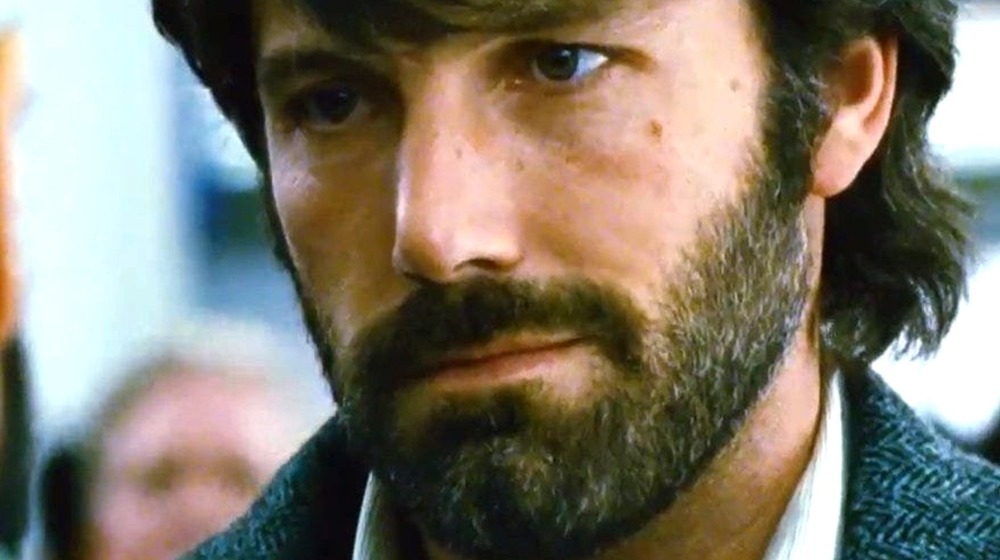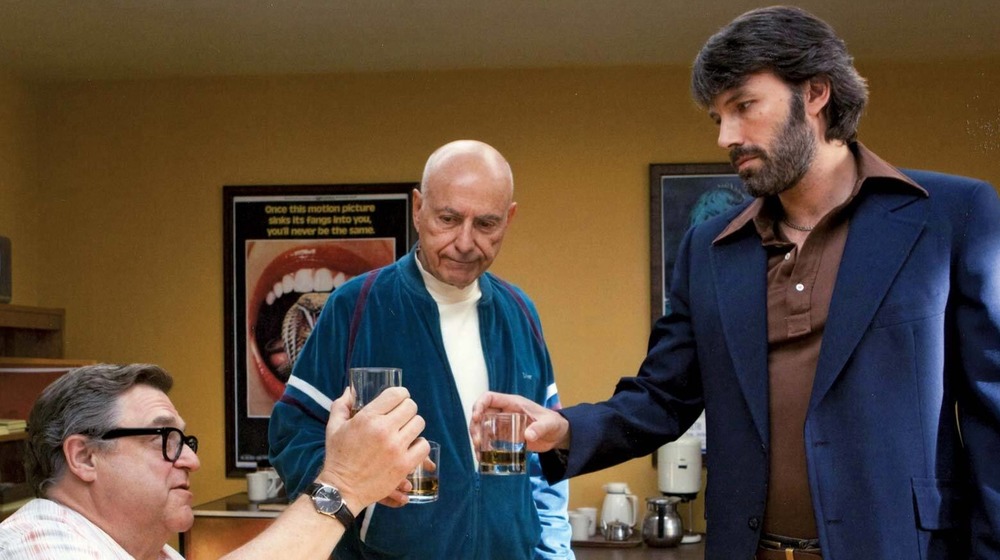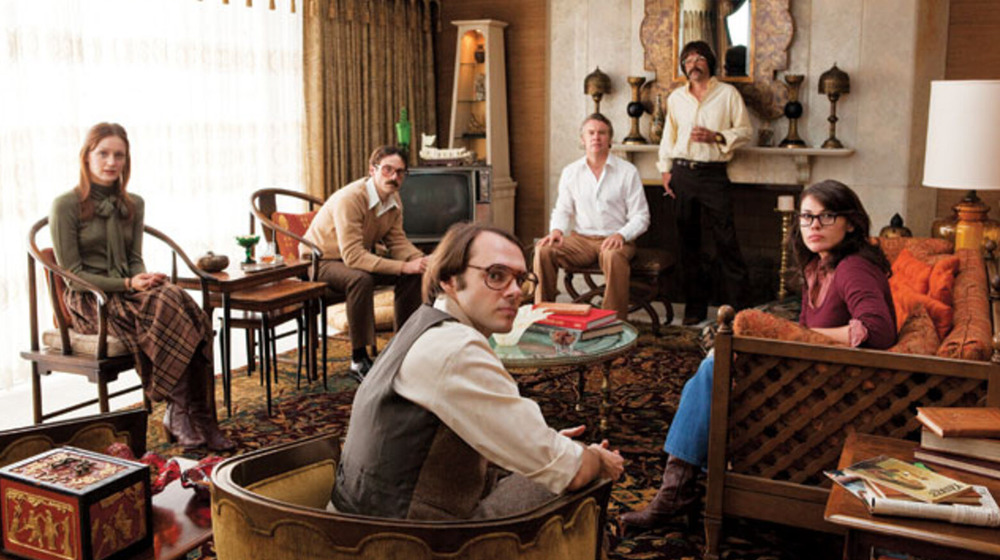The Ending Of Argo Explained
2012's Argo took the stranger-than-fiction true story of the Canadian Caper and spun it into Hollywood gold. The film earned three Academy Awards, including one for Best Picture, and three Golden Globes, earning a nod to Ben Affleck for Best Director. Despite its accolades, the film wasn't without its controversy. The adaption was criticized for twisting the details of the international joint rescue mission and minimizing Canada's role. The producers (which include George Clooney) cited creative freedom when asked about the film's differences. At a TIFF press conference, Ben Affleck defended the fictional changes because "there's a spirit of truth" to the film (via Macleans).
Despite some inaccuracies, Argo was undoubtedly gripping. The film's tension rose until it culminated into the escape of six Americans and one CIA operative out of Iran during the Iran hostage crisis. Ben Affleck played operative Tony Mendez, while the stranded diplomats included roles portrayed by Tate Donovan, Clea Duvall, and Rory Cochrane. The ensemble cast also included Victor Garber as Canadian ambassador Ken Taylor.
The plot moved quickly, with circumstances changing scene by scene, and while we know the group made it out alive, some of the details of how they did it may have left lingering questions. If you're wondering why a make-up artist and producer care about six people stuck in Iran, or why hero Tony Mendez didn't get a medal, read on for the ending of Argo explained.
Argo means well
Argo has a message that the entirety of Hollywood can use as a mantra: dream it, believe it, achieve it. It also centers on the theme that its fictional Star Wars-esque script touted: the good guys always win.
Tony's plan to extract the Americans by pretending to be filmmakers seems farfetched, so much so that higher-ups pull the plug on the operation a day after Tony lands in Iran and everything has been set in motion. Undeterred, and with seven lives (including his own) on the line, Mendez moves ahead with the plan, forcing his boss Jack O'Donnell (Bryan Cranston) to have faith, as well as to find a way to force the President's office to re-approve the mission. At the 11th hour, the plan is approved, and the group heads towards airport security. This is the moment they've all been preparing for; revolutionary guards stand between the group and complete freedom. They're held for questioning, but then, Joseph Stafford (Scoot McNairy), who has been the most reluctant to go along with the plot, convinces the guards that they really are filmmakers.
To verify their story, the guard calls Studio Six, the fictional production company set up by Mendez, Lester Siegel (Alan Arkin), and John Chambers (John Goodman) as a front for the fake film. Chambers answers the phone just in time, as he seamlessly explains that Mr. Harkins (Mendez's alias) was out of town on a location scout. This is enough for the guard, who dismisses the group to board their flight at the very last second.
As the group stores their bags overhead, minutes away from achieving their goal, the Iranian revolutionaries piece together their shredded photographs from the embassy and discover they've been hiding at the Canadian ambassador's house this whole time. They call the airport, but it's too late, despite a last-minute chase on the tarmac, the plane takes off and the diplomats are on their way to freedom.
Despite their escape, there are still 52 other American hostages being held, so Canada takes full responsibility for the rescue mission. That means that even though Mendez and Chambers were awarded an Intelligence Star by the United States government for their efforts, the award must stay confidential. That remained the case until 1997 when the mission was declassified.
As promised, the good guys win, and those who helped along the way are rewarded for their efforts, underlining the film's messages of doing good and reaping great possibilities.
Controversy continued after Argo was released
The film was based on Tony Mendez's first-hand account of the mission from his book The Master of Disguise, and a 2007 Wired article by Joshuah Bearman entitled, The Great Escape: How the CIA Used a Fake Sci-Fi Flick to Rescue Americans from Tehran. Both pieces give a more accurate account of the historical facts than Argo did. Government officials including U.S. President Jimmy Carter (who was president at the time of the operation) came forward to dispute how Canadian ambassador Ken Taylor was underrepresented in the film. The former President praised the film, but said "the main hero, in my opinion, was Ken Taylor, who was the Canadian ambassador who orchestrated the entire process." (via Politico). The operation was also aided by the British and New Zealand embassies, but the film depicted the countries as eschewing any aide to the escapees. The film also made up a number of scenarios (like the Bazaar scene) and characters, such as Sahar, a maid for the Canadians who deduces who his guests are, to add tension to the story.
Thankfully, creative license isn't a crime, and even those who argue its historical accuracy praise Argo for its actors, pacing and creativity.


